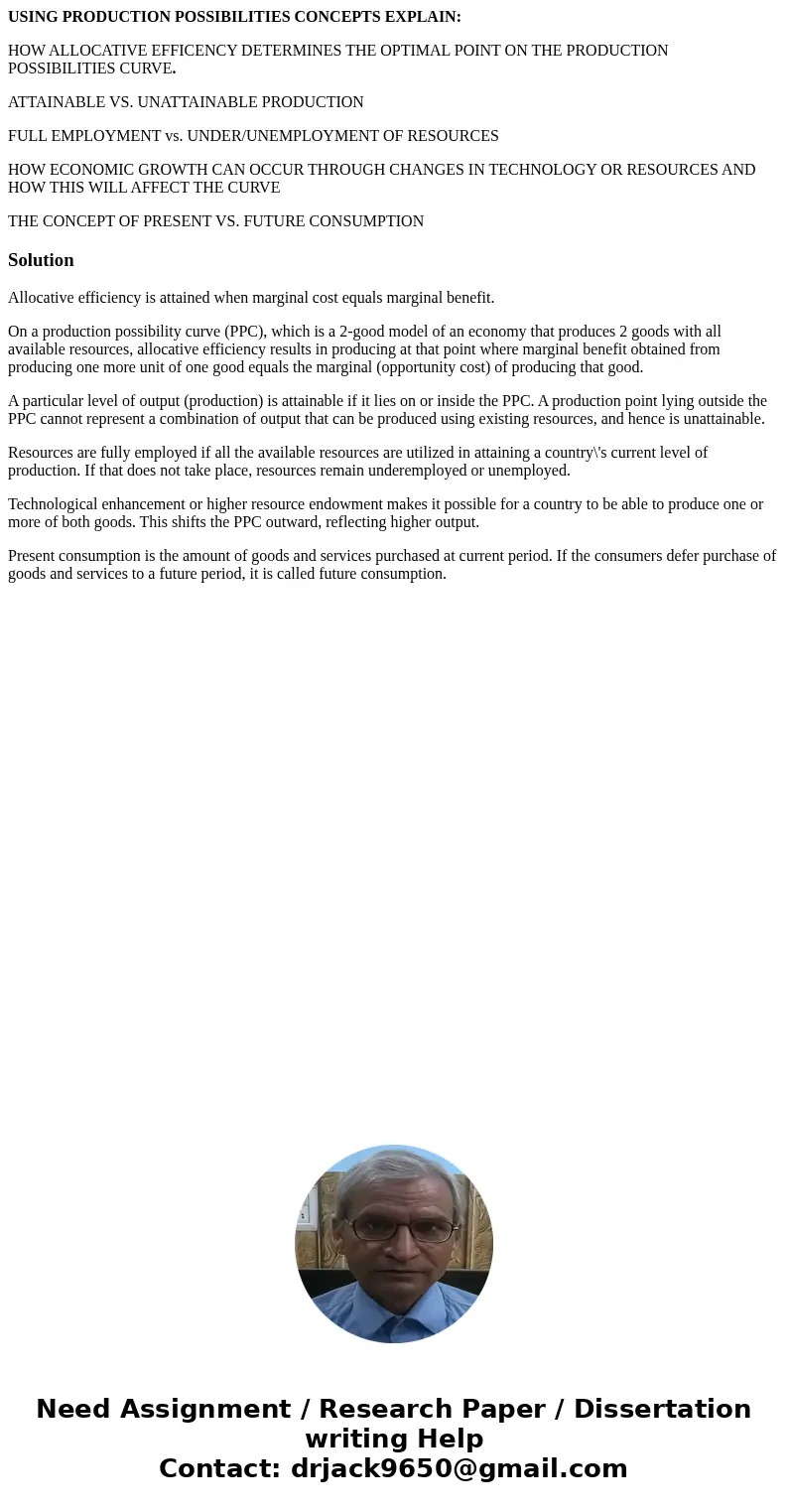USING PRODUCTION POSSIBILITIES CONCEPTS EXPLAIN HOW ALLOCATI
USING PRODUCTION POSSIBILITIES CONCEPTS EXPLAIN:
HOW ALLOCATIVE EFFICENCY DETERMINES THE OPTIMAL POINT ON THE PRODUCTION POSSIBILITIES CURVE.
ATTAINABLE VS. UNATTAINABLE PRODUCTION
FULL EMPLOYMENT vs. UNDER/UNEMPLOYMENT OF RESOURCES
HOW ECONOMIC GROWTH CAN OCCUR THROUGH CHANGES IN TECHNOLOGY OR RESOURCES AND HOW THIS WILL AFFECT THE CURVE
THE CONCEPT OF PRESENT VS. FUTURE CONSUMPTION
Solution
Allocative efficiency is attained when marginal cost equals marginal benefit.
On a production possibility curve (PPC), which is a 2-good model of an economy that produces 2 goods with all available resources, allocative efficiency results in producing at that point where marginal benefit obtained from producing one more unit of one good equals the marginal (opportunity cost) of producing that good.
A particular level of output (production) is attainable if it lies on or inside the PPC. A production point lying outside the PPC cannot represent a combination of output that can be produced using existing resources, and hence is unattainable.
Resources are fully employed if all the available resources are utilized in attaining a country\'s current level of production. If that does not take place, resources remain underemployed or unemployed.
Technological enhancement or higher resource endowment makes it possible for a country to be able to produce one or more of both goods. This shifts the PPC outward, reflecting higher output.
Present consumption is the amount of goods and services purchased at current period. If the consumers defer purchase of goods and services to a future period, it is called future consumption.

 Homework Sourse
Homework Sourse